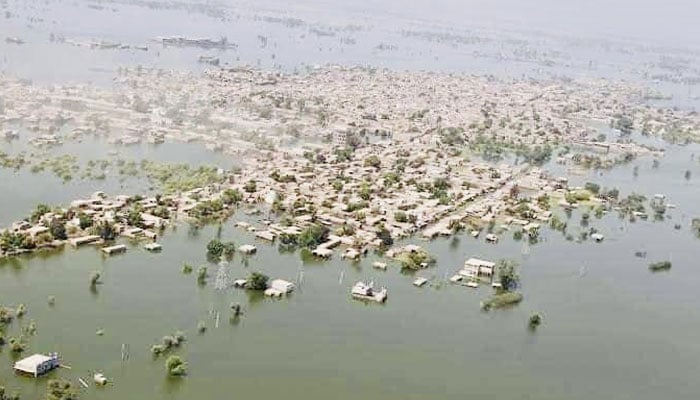According to the latest UN report released on Tuesday, floodwaters still inundate eleven districts of Sindh and two districts of Balochistan. The UN body’s Satellite Centre imagery indicates an estimated eight million people still potentially exposed to floodwaters or living close to flooded areas.
The report states floodwaters continued to recede in many flood-affected areas of the country, but inundation continue to be present in the districts Badin, Dadu, Jamshoro, Kambar-Shahdadkot, Khairpur, Mirpurkhas, Sanghar, Umerkot, Shaheed Benazirabad and Naushahro Feroze of Sindh, and Sohbatpur and Jafferabad districts in Balochistan.
It also underlines the gross impact standing floodwaters will have on health, particularly for children. Poor sanitation and contaminated water resources are adversely affecting the health and wellbeing of children as cases of diarrhea and other waterborne diseases are still prevalent.
The floods have exacerbated underlying vulnerabilities that existed in flood-affected areas prior to recent flooding. According to WHO, Pakistan is among the top 10 countries in the world with a large pool of unvaccinated or under-vaccinated children and is home to more than 600,000 children who have not received a single vaccine dose.
The recent floods is feared to compound the problem of access to routine immunization services, where interruptions have already been reported in Balochistan and Sindh.
Moreover the frail food security situation is expected to push an additional 1Million people is deteriorating and is forecast to fall into the emergency food security phase between January and March 2023.










